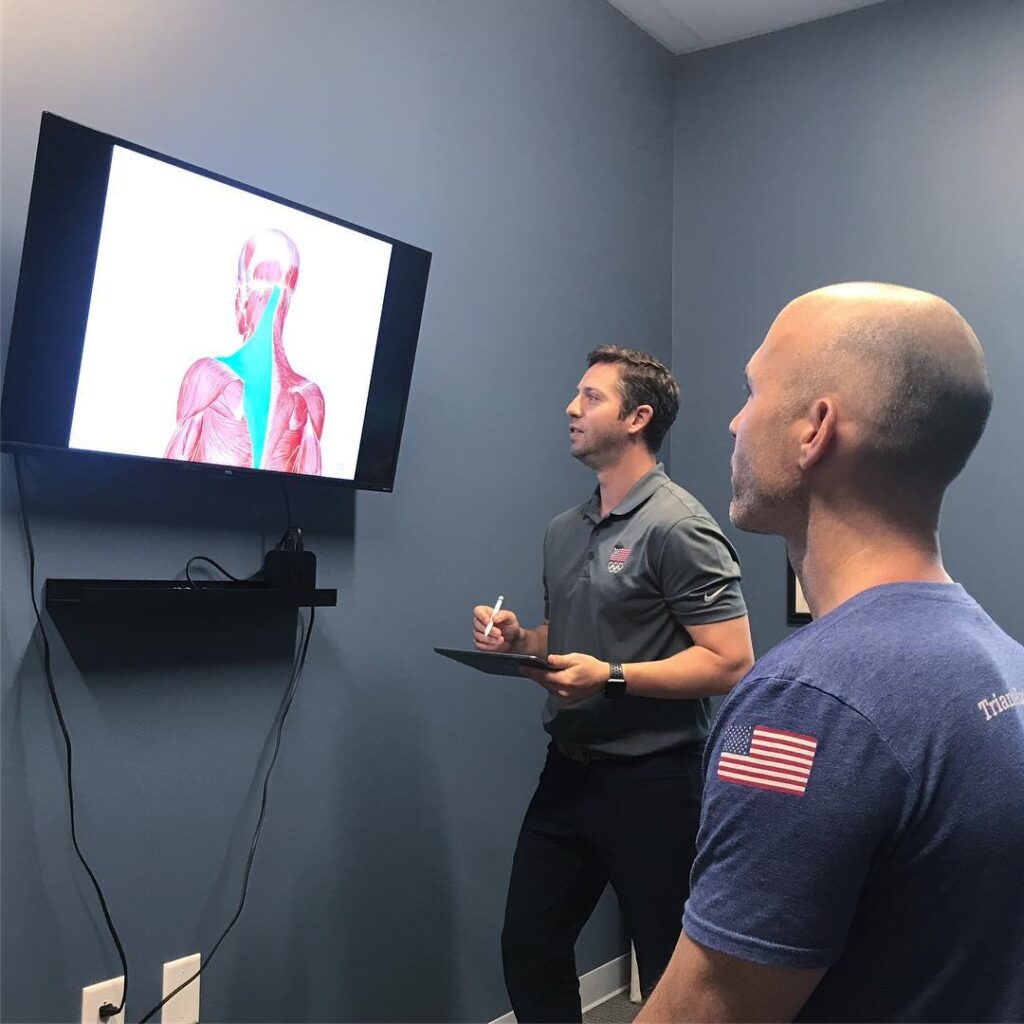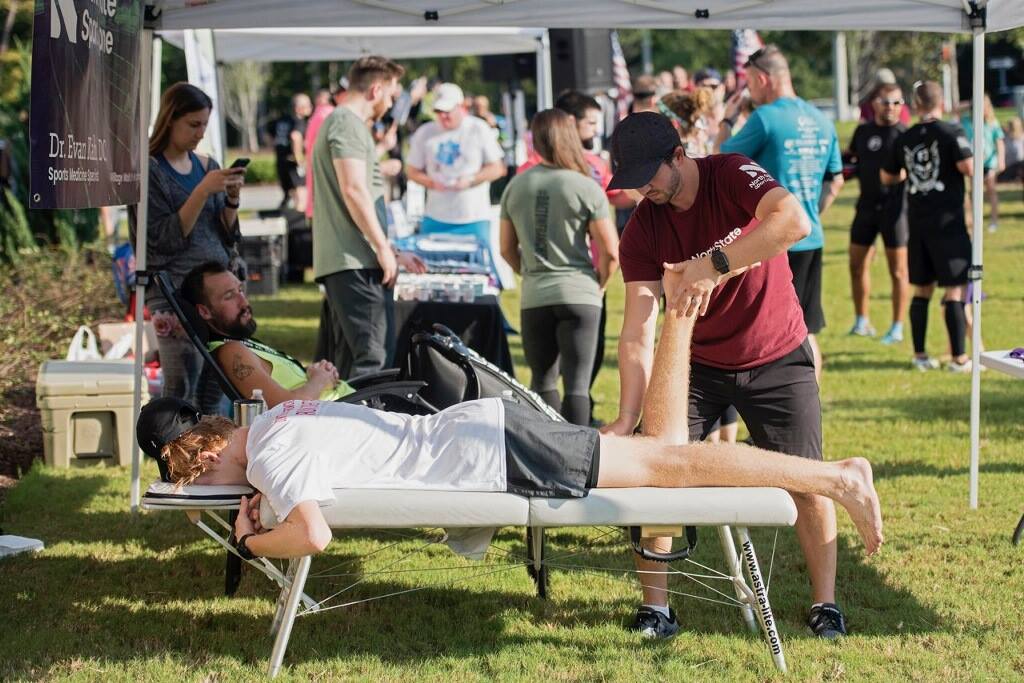
Hi! I’m Joel.
Owner & Personal Coach at Carolina Multisports, LLC
USAT Level I Certified Coach
FMS Level I Certified Pro
OS Certified Coach

Owner & Personal Coach at Carolina Multisports, LLC
USAT Level I Certified Coach
FMS Level I Certified Pro
OS Certified Coach
This week, as part of my weekly Triathlon Training Tips post, I invite you to join us at our 2022 Fall Training Camp during two FREE break-out sessions via Zoom.
Everyone who logs into at least one session will be entered to win a 30 min. massage by Eddie Summers, of Body Restoration Massage & Bodywork. The drawing will be done Saturday after the last session.

Learn more about the unique nutritional needs of endurance athletes during training, racing, and recovery with Chris Newport, MS, RDN, LDN, EP, CISSN.
Learn more about The Endurance Edge.
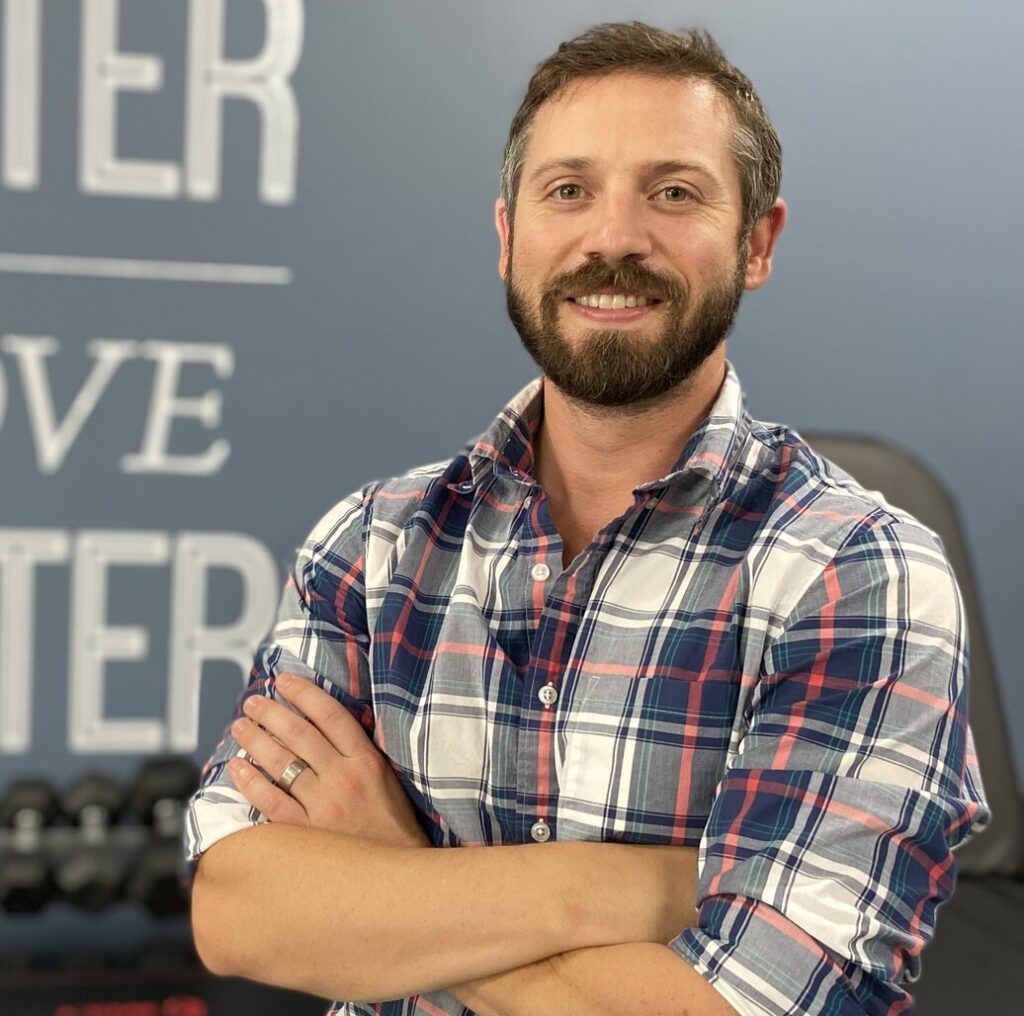
Learn more about how the demands of endurance sports affect the body and what to do with Sports Medicine Chiropractor Dr. Evan Kahn, DC, DACBSP.
Learn more about North State Sport and Spine.
As triathletes, our mode of travel is forward and very repetitive. Therefore, we are usually very strong in this plane. However, we are typically very weak in the sagittal plane or side-to-side plane.
During a triathlon, have you experienced or ever noticed someone leaning to one side during the run? The glute med is very weak in this example, allowing the hip to drop, therefore, leaning the body over. This weakness forces other muscles to compensate, leading to excessive fatigue and then on to potential injury as running form degrades.
Add these simple exercises to your strength routine. Do a few sets on each side, increasing time and reps as you get stronger. This winter, you could also throw in some sports that break up the training routine and exercise the sagittal plane like basketball, pickle ball, indoor soccer, etc.
Good luck!
There are 4 sculling drills included in this video:
Top Scull: This drill helps you feel the water at the setup phase of the stroke. Imagine piling up two mounds of sand in front of you.
Mid Scull: This drill helps you feel the water in the push phase of the stroke. Make sure your elbows are in front of you so you can see them in your peripheral vision. Think angles.
Rear Scull: This drill helps you feel the water at the exit phase of the stroke. Make sure you don’t recover your hand too early by twisting your hand. Keep your hand against the water until your fingertips come out of the water. Imagine rolling a ball behind you.
Sculling on Your Back: Change it up by going on your back. You can go forwards or backward. This is an excellent core exercise too.
For all of these drills, make sure your body position is level with the surface of the water. Use a buoy or kick board between your legs for added buoyancy if needed until you develop the correct form.
There are four skipping drills shown in the following video:
A Skip: Set this skip up by leading with the knee, keeping your feet under you with your toes up, and swinging your arms back. Imagine pulling a pistol out of a holster.
B Skip: This skip activates the posterior chain or back of the leg and emphasizes foot placement. Imagine a horse pawing the ground.
C Skip: Because our mode of travel is forwards, we are typically very strong in the frontal plane. However, for endurance athletes, we need to strengthen the sagittal plane or side-to-side plane. This skip opens up the external rotators and engages the muscles that keep us from falling over to the side.
Orange Crush: This version of the butt kick replicates the gait pattern more accurately. By keeping the foot under our butt, we activate the correct muscle patterns.

BY LAINE BERGESON BECCO, FMCHC | MAY 2020
It’s obvious enough that our food choices influence our digestive and metabolic health.
What’s less obvious — but no less important — is the impact of sleep. Sleep also affects digestion and metabolism, and getting enough rest is central to weight maintenance, and any efforts to improve gut function, lose weight, or prevent chronic diseases.
Even someone who eats well and exercises regularly may be prone to metabolic problems without enough sleep, says functional-medicine pioneer Mark Hyman, MD, head of strategy and innovation for Cleveland Clinic’s Center for Functional Medicine. “One study found that just one partial night’s sleep could create insulin resistance, paving the path for [type 2] diabetes and many other problems.”
But the food–sleep connection isn’t a one-way street. Just as sleep affects our metabolic health, our food choices — including what, when, and how we eat — can affect our sleep quality.
“Many people are well aware of sleep hygiene for optimal sleep,” says functional-medicine practitioner Greg Plotnikoff, MD. “Not many are aware of dietary hygiene for sleep.”
The connection includes the obvious culprits and then some, he emphasizes. “Diet and metabolism can play very important roles in sleep beyond the well-known factors of alcohol and caffeine.”
In short, our eating habits can make or break our sleep — and our sleep patterns can make or break our eating habits.
So, what makes sleep such a potent factor in metabolism? And how do our eating habits influence sleep? Our experts offer some insight.
Poor sleep disrupts metabolic systems and can trigger these three conditions.
1. Poor Weight Maintenance
Skimping on sleep can lead to weight gain, especially around the waist where stress-induced pounds often collect.
Studies show that sleep-deprived people tend to select sweet, fatty comfort foods. This quick-energy fare may compensate for the sluggishness and fatigue a poor night’s sleep produces, but it also increases daily caloric intake by as much as 20 percent.
“When you don’t get enough sleep, you don’t get the restoration sleep provides,” says Orfeu Buxton, PhD, professor of biobehavioral health at Pennsylvania State University. “The brain and body have to be active and alert for more time, and your body may need a little more energy, so your system overcompensates. You eat a few more calories.”
Even one night of sleep deprivation can trigger weight gain, according to a small but significant 2019 study Buxton and his team published in the Journal of Lipid Metabolism. Fifteen healthy men in their 20s spent 10 days eating the same calorie-dense meal. Most nights they slept 10 hours. But for four consecutive nights, they slept five hours or less.
Following the sleep-restricted nights, participants reported feeling hungry after eating the same meal that filled them up on the sleep-sufficient nights. What’s more, blood tests showed that their fatigued bodies were more apt to store the calories they ate as fat.
Eating at night, when the body expects to be sleeping, can also cause weight gain. In one study, mice whose meal patterns were flipped from day to night — they ate during their nighttime hours and fasted during the day — experienced a 48 percent increase in body weight. Mice eating the same calorie-dense meals during the daytime gained only 20 percent more weight over a period of six weeks.
Hormonal mechanisms appear to be at work in all of these cases. Production of the hunger hormoneghrelin increases when we’re tired. And, in a perfect storm of metabolic unfairness, sleep deprivation inhibits the production of leptin, the satiety hormone that signals fullness. With little or no leptin, we fail to get the cue that we’ve had enough food.
The final factor in sleep-deprived weight gain is behavioral: When we’re fatigued, the quality of our decisions can suffer.
“Sleep deprivation tends to make us do things that are riskier and more reckless,” says Chris Winter, MD, author of The Sleep Solution: Why Your Sleep Is Broken and How to Fix It. “In your normal rested state, you would be like, ‘I’m not going to eat this ice cream.’” But when you’re sleep deprived, he adds, you’re more likely to eat the whole pint.
2. Insulin Resistance
Just one night of shortened sleep — four hours of shuteye — can set the stage for insulin resistance.
“Not sleeping enough causes a rise in cortisol and changes insulin sensitivity,” says functional-medicine practitioner Myrto Ashe, MD, MPH. Prolonged periods of inadequate sleep can cause chronic insulin resistance, which can lead to prediabetes or type 2 diabetes.
Large-scale studies have repeatedly shown that type 2 diabetes is twice as common in adults who regularly report insufficient sleep; the connection between short sleep duration and type 2 diabetes is separate from other risk factors, such as high blood pressure, overweight or obesity, and family history. Once type 2 diabetes develops, studies show, the condition reduces sleep quantity and quality.
3. Microbiome Disruption
Poor-quality sleep appears to mess with the gut microbiome, too. Animal studies have linked inadequate sleep to changes in gut flora that trigger inflammation and affect insulin sensitivity.
They’ve also shown that obstructive sleep apnea — a nighttime breathing disorder associated with snoring and poor sleep — decreases levels of the bacteria that produce butyrate. A short-chain fatty acid, butyrate has been studied for its health-promoting properties: It improves non-rapid-eye-movement sleep, which includes the phases when the body passes into deep sleep and performs its tissue-repair work.
Low butyrate levels can lead to a self-reinforcing cycle of sleeplessness — and compromised gut health.
Four eating habits that can influence sleep quality.
1. Meal Timing
If you’ve ever gone to bed with a full stomach, you know that sleep and digestion don’t always mix. To avoid provoking indigestion, Winter recommends letting two to three hours pass between your last meal and lights out.
“We tend to sleep best in a relatively fasted state,” he says. “A lot of metabolic processes go on after eating that can disrupt sleep.”
A big meal right before bedtime can also prevent your heart rate from dropping to its lowest point, which can lead to less-restorative sleep. This may have particular implications for fitness and physical performance: A heart rate that hits its lowest point during the first half of a night’s sleep is correlated with better athletic recovery.
Still, Winter doesn’t advise going to sleep famished. “If you need to eat, eat,” he says. “It’s difficult to go to sleep when you’re hungry.”
He recommends a small snack if you’re eating late.
(See below for some good bedtime options.) More than this will divert the body’s energy away from its “powering down” mode.
2. Food Choices
Some foods, such as hummus, nuts, high-fat yogurt, and salmon, actively promote sleep, says Winter. These foods contain tryptophan, which the body converts to calming serotonin and sleep-inducing melatonin.
High-glycemic foods, like rice and pasta, are also known to increase tryptophan levels in the brain. These foods don’t contain tryptophan, but they raise insulin levels; insulin helps tryptophan cross the blood–brain barrier.
Indeed, research suggests that eating a small carbohydrate-rich meal or snack in the evening helps some people fall asleep faster.
The tricky thing is that carbs can also disrupt sleep. How they affect you depends on many factors, including how much you eat, as well as your unique metabolic tendencies.
If you’re at all sugar-sensitive, carbohydrates can trigger too much insulin production, resulting in an eventual blood-sugar crash. These crashes signal the release of norepinephrine, a neurotransmitter associated with alertness, explains José Colón, MD, MPH, who specializes in pediatric sleep disorders.
If, after a late-night cookie, you experience a blood-sugar crash while sleeping, you’ll also get a related hit of stimulating norepinephrine. This can wake you up — and keep you awake.
Still, it’s important for anyone managing ongoing blood-sugar-regulation issues, such as diabetes and hypoglycemia, to maintain stable blood-sugar levels at night. This may mean eating a simple, blood-sugar-stabilizing snack before bed.
This could benefit people who struggle with fatigue during the day as well, says Plotnikoff.
“A small snack just before bed can make a huge difference to sleep length and quality,” he says. “Your blood sugar won’t drop off too low during the night, helping you sleep better. You’ll feel more alert and rested throughout the following day, too.”
Plotnikoff suggests a complex carb, like a bit of sweet potato, with a healthy fat, like ghee, to slow the absorption of the carbohydrates. Or try celery (a healthy carb) dipped in nut butter (a healthy fat).
For regular meals, he encourages people who struggle with sleep to reach for whole foods that contain high levels of the brain-calming amino acid GABA (gamma-aminobutyric acid). These include broccoli, cabbage, cauliflower, mushrooms, and spinach. GABA promotes relaxation.
Long-term calorie restriction can also disturb sleep. “Patients who are on very low-carb diets for long periods of time often complain about waking up between 1 a.m. and 3 a.m., and feeling very hungry,” says Hyman.
A blood-sugar imbalance may be the culprit, so he recommends a protein-rich snack, like almond butter, before bed. Still, he sees this as a short-term fix.
“It’s important to look at your overall diet and make sure you’re eating enough calories and blood-sugar-balancing meals,” he says. Evening meals that keep blood-sugar levels steady contain enough healthy fat and protein to anchor any complex carbs that are also on your plate.
The mix of fat, protein, and carbs that will be ideal for keeping your taste buds and blood sugar happy all night long depends on your individual needs. Everyone is different, and discovering the right ratio of macronutrients takes some experimentation. Ideally, you’ll go to bed feeling comfortable — neither famished nor overly full.
“You want to eat enough that you’re not hungry when you go to bed,” says Ashe. She also suggests you aim to be finished eating about three hours before you hit the pillow.
Finally, people who follow vegan, vegetarian, or grain-free diets may be missing out on certain sleep-promoting amino acids, like tryptophan or histidine, says Plotnikoff. If you suspect that an amino-acid deficiency is affecting your sleep quality, talk with a functional-medicine practitioner about ways to address it with food or supplements.
3. Alcohol Consumption
Alcohol is a sedative, so sipping wine at dinner or enjoying a cocktail before bed may seem like a good idea if you have trouble falling asleep. But don’t let first impressions fool you: Studies link alcohol with disrupted and poor-quality sleep, as well as reduced time spent in restorative deep sleep.
“Alcohol doesn’t make a person fall asleep or sleep better,” says Winter. “It makes a person unconscious.”
Ashe concurs. “Alcohol and anything that impacts your brain, like sleep medications, antidepressants, and anti-anxiety medications, alter the brain’s sleep architecture,” she says. “They may produce sedation, which feels like sleep but doesn’t have all the benefits.”
If you do enjoy a cocktail now and then, Hyman recommends finishing it before 7 or 8 p.m.; this leaves the liver enough time to clear the alcohol from your system before you sleep.
Still, if you have trouble falling or staying asleep, skip the booze. He recommends magnesium citrate supplements or chamomile tea instead.
4. Food Habits
Our eating patterns can be deeply ingrained and powerfully communal. Maybe you share a big bowl of popcorn with your family during movie nights, not so much because you’re hungry but because it’s tradition. Or maybe your guilty-pleasure TV show is even more pleasurable when paired with chocolate-chip cookies. These are emotional bonds.
If you’re interested in modifying what and when you eat to improve your sleep, don’t try to make changes using willpower alone. “You can’t look at food in isolation,” says Ashe, who uses exercise and meditation to manage her diet and her sleep. “If I meditate, I am less likely to eat after 7 p.m. When I’ve got other avenues to deal with my stress, I am less likely to eat chocolate at night.”
Those strategies help her maintain the dietary habits that promote good sleep. And enjoying eight hours of quality sleep each night helps her prioritize meditation and exercise. It becomes a virtuous cycle, she says.
When food habits support sleep, and sleep supports good food choices, two healthy patterns feed off each other. And that should help you rest a little easier.
This originally appeared as “Hungry for Sleep” in the April 2020 print issue of Experience Life.
Laine Bergeson Becco, FMCHC is an Experience Life contributing editor and functional-medicine certified health coach.
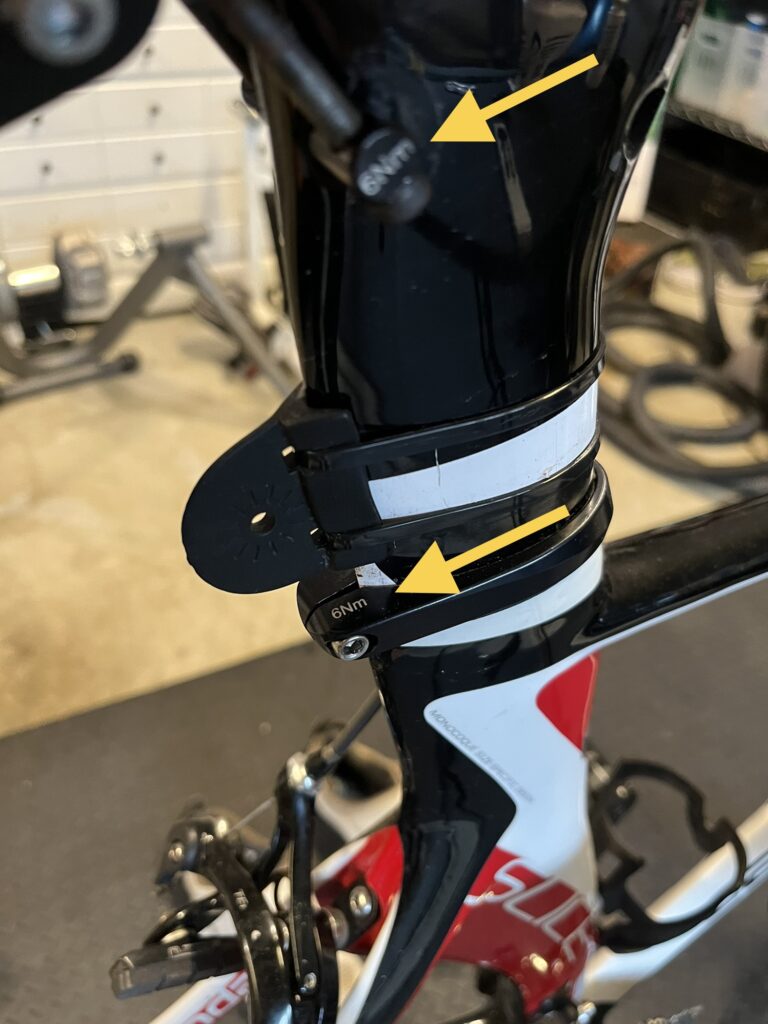
A few weeks ago, I was preparing for my first race of the new year. Having rode my bike all winter without cleaning or maintaining it, (which I do NOT recommend) I knew it needed some attention. As I was going over the bike, tightening each bolt, I inadvertently over tightened the screw on my seat post and it popped and broke!
I was able to pick up a new bolt but I also got a torque wrench. Take a look at your bike and you’ll probably find the torque specifications printed right on the bike at critical locations like your seat post, stem, or cockpit. They are measured in Newton Meters (Nm). Also, if you have the owner’s manual for your bike or can find it online, they’ll have every torque specification for every bolt and screw. As you can see from the picture, I should have tightened my seat post to 6 Nm or Newton meters of force.
Instead of over tightening, you might under tighten a screw or bolt too. Have your aero bars dropped or your seat shifted during a ride? A friend of mine had screws fall out of their shoe during a race and couldn’t stay clipped into their pedals. Another friend’s bottle cage fell off during a group ride, bouncing around the peloton like the game Plinko!
Using a torque wrench may not only save you time, money, and a head ache, but will also keep you and those around you safer. These wrenches can be pricy. If you opt not to ever get one, be sure you service your bike frequently or anytime something moves.
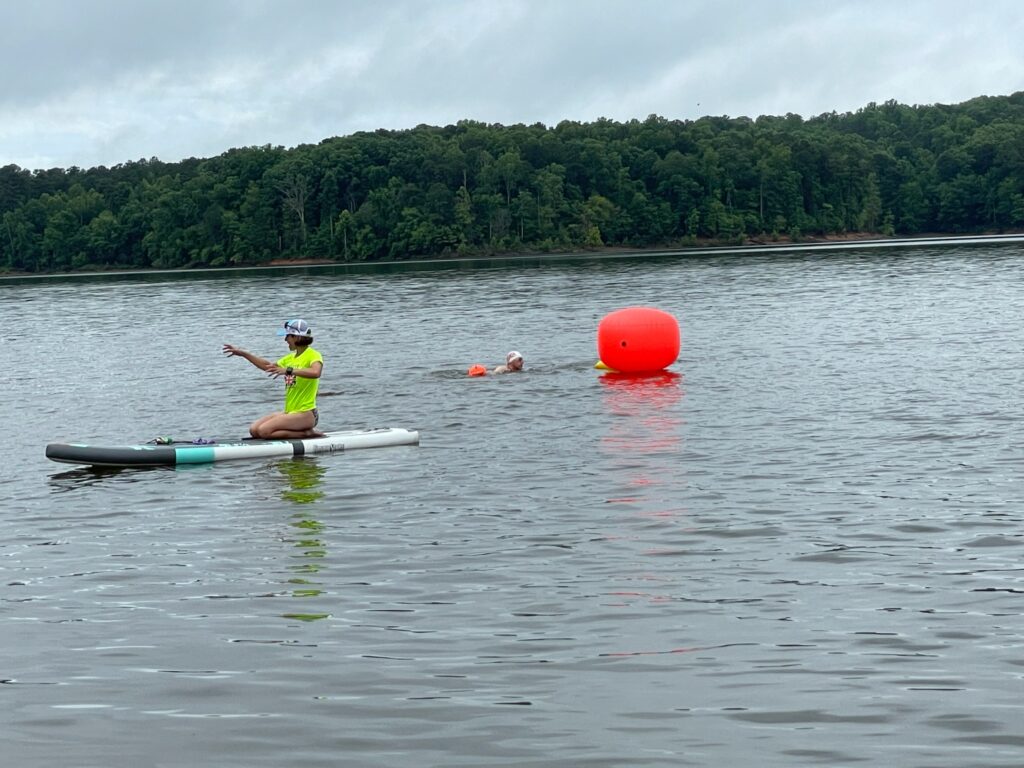
Hosted in conjunction with Jackie Miller, BritFit Personal Training & Coaching
Back by popular demand, join us for our open water swim practices again in 2022. Practices will be held every other Wednesday throughout the year until October. With races right around the corner, hone your water entry, sighting, drafting, buoy turn skills, and more.
We’ll provide sighting buoys, professional tips, and safety supervision. Bathrooms nearby. All abilities welcome.
Each practice is $10. Use the code $10OFFOWS to get a free session when you purchase at least 5.
Mark Your Calendars:
Next Practice: March 23
Future Practices: April 6, April 20, May 4, May 18, June 1, June 15, June 29
Location: Ebenezer Beach, Jordan Lake 920 Beaver Creek Rd, Apex, NC 27502
Time: 6:00 – 7:00 PM
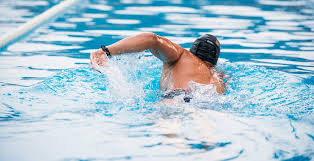
When one thinks of the three components of the triathlon, it’s easy to emphasize motions that target “forward motion.” Running, biking, and swimming are sports that seem like the athlete moves in one direction, and as such we try to create a more streamlined looking posture in all three of these actions. But there is a key component that often gets overlooked in training, and that’s rotation. You may think you don’t need any rotation in your joints, but believe it or not, you see quite a bit of rotary elements in triathlon, in particular the swim.
Both shoulders need quite a bit of rotational freedom in the swim, which may seem a bit obvious to you. But what may not seem as obvious is the need for thoracic spine rotation. The thoracic spine makes up your midback and covers the entire length of the torso. The scapula, or shoulder blade, rests atop the rib cage. The rib cage is attached to the thoracic spine, so both the ribs and the thoracic spine are linked together. Wherever the thoracic spine rotates, the rib cage goes along with it – and guess what else? Yes, your shoulder blades.
During the swim, the shoulder needs to rotate back and out of the water on one side, and rotate down and in on the other. Simultaneously, the thoracic spine rotates to assist this motion. What happens if your thoracic spine is restricted and does not rotate well? Your shoulder has to work harder to reach the same result, which can lead to repetitive motion disorders such as shoulder impingements and rotator cuff problems.
Even if you aren’t in pain, you may be losing out on some efficiency due to a lack of thoracic spine rotation. You may be able to increase the power out of your shoulder simply by gaining more rotation through the spine. Plus you’ll be reducing the chance of picking up a shoulder injury along the way.
If you suspect you aren’t using your spine in the swim, talk to Coach Joel for some technique evaluation and give us a call at (984) 225-2149.
Dr. Evan Kahn, DC, DACBSP is a sports medicine chiropractor and the owner of North State Sport & Spine in Holly Springs, NC.
As sports chiropractors, we have the privilege of seeing many different kinds of athletes that vary all over in skill level. The multisport athlete that presents to the clinic always offers a fun challenge due to the training requirements, biomechanics of the three sports, and volume management.
From the swim, we tend to see a lot of shoulder pain from impingement syndromes. This is usually caused by a lack of mobility and stability of the shoulder complex as it comes into contact with the rib cage and thoracic spine.
Due to the athlete’s posture while on the bike, we tend to see a lot of spine pain (usually mid and upper spine pain, but it can be anywhere), knee pain from repetitive stress (or a poor bike fit), and nerve entrapments in the upper extremities.
And from the run, we tend to see the common lower extremity conditions like plantar fasciitis, IT Band syndrome, and shin splints.
Our treatments depend greatly on what is causing the conditions. We specialize in soft tissue treatments, including Active Release Technique, Dry Needling, Cupping, Graston, among other manual therapies. We tend to use different taping techniques as well to keep our treatments holding longer after the treatment session ends. We also find and adjust the dysfunctional parts of the spine in order to promote proper biomechanics and a return to function. And of course, rehabilitation is also our specialty, prescribing specific exercises to give you homework to target the dysfunctional areas causing your pain.
